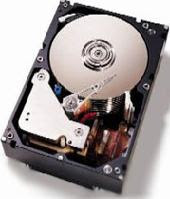Today we announced the RAID recovery utility add-on for Data Compass is on the way.
As we know, RAID recovery is one of the most complicated recovery processes, and therefore the cost is always very expensive.
Therefore, we engineered the cutting edge RAID recovery technology as a built-in utility in DC for the purpose of RAID system diagnosis and recovery. Now besides the capability in handling physical and logical defective hard drives, Data Compass becomes capable for RAID recovery, making Data Compass the equipment with the best cost performance ever.
1. Why RAID recovery?
RAID system may be fault-tolerant, but they are not fault proofing. While most commercial RAID implementations can tolerate the loss of a single hard drive, if bad things happen to the RAID controller or configuration (lost, damaged, reset by mistake…), your data may be compromised, thus data recovery is necessary.
RAID systems are susceptible to the same ailments that plague single hard drives, such as viruses, logical problems, human error, and physical damage. Moreover, due to their complexity, they may suffer from additional points of failure, such as server registry configurations lost, accidental RAID drive reconfigurations, RAID controller failures and multiple drive failures.
2. Basic principle of the RAID Recovery Add-onThis utility will extract the data from multiple HD in a RAID system, and work to rebuild the correct data according to a variety of RAID data array, independent from hardware array card or server system. The essence of the RAID recovery procedures is to crack the algorithm of a variety of RAID cards, or simulate the RAID card to read data intersperse among multiple segment hard drives and recompose it in a correct form to a new storage medium by analyzing the data structures of the multiple segment hard drives in the RAID system directly.
3. More Details about the RAID Recovery Add-on
Supported RAID Series
SNIA (Storage Networking Industry Association) Common RAID Disk Data Format Specification Revision 01.00.00 Compatible RAID 0, RAID 5, RAID 5E and RAID 5EE.
SNIA (Storage Networking Industry Association) Common RAID Disk Data Format Specification Revision 01.00.00 Incompatible RAID 0, RAID 5, RAID 5E and RAID 5EE, includes the following vendors and types:
HP/Compaq
AMI Linux-standard
Adaptec
backward/ forward parity Dynamic
Supported RAID Type
RAID0
RAID5
RAID5E
RAID5EE
Supported Data Source Type
ISO segment drive image;
Original physical segment hard drive.
Supported File System with DirectView/ DirectExtract Operation
FAT File System
NTFS File System
Ext2/Ext3 (supported after planned upgrade)
Supported Working Modes
Automatic Analysis, which works in the following cases
When there are segment drives missing;
When the MBR is missing
When MBR is not on sector 0
When partition linked list is corrupted
Automatic analysis and reconstruction of: RAID Disk Array, starting position of the data, stripe size and stripe order: Left Asynchronous, Left Synchronization, Right Asynchronous and Right Synchronization.
High efficiency
Manual Analysis
Similar to WINHEX, but with a easy, quick and smart operation; users can have DirectView® to the data through DCEXP utility, so to verify the manually set parameters quickly and easily.
4. What Can Data Compass Do Now:
Data recovery from physically damaged HDDs is what Data Compass designed for.
Data recovery from HDDs with severe multiple BAD sectors, which appear because of platter surface scratch or malfunction or instability of the magnetic head assembly (MHA).
Data recovery from HDDs that start to produce "clicking" sounds, which may be caused by corruption of sector servo labels or a MHA malfunction. If some heads or surfaces are damaged it is possible (before installation of MHA replacement) to create a copy of data using the remaining good surfaces or drive heads.
Availability of tools for logical analysis of FAT (DBR, FAT and FDT corruption) and NTFS (DBR and MFT corruption) file systems in the software complex allows data recovery in cases, when a drive is functional and only logical data structure is corrupted.
When used with malfunctioning drives, Data Compass complex often allows selective extraction of data necessary to your customers without reading all data from a drive ("recover data by file" without creating a complete disk image) saving a lot of time. In some cases, when drive malfunctions cause constant self-damage (like scratches on disks or instable MHA) these are the only means to accomplish this task. With the
ShadowDisk technology adopted, users need not to worry about the drive degradation problem.
Automatically rebuild and recovery from RAID system
5. Why shall I use Data Compass RAID Utility and not any other DR programs of other companies?
Here are the main differences of Data Compass RAID Utility compared with numerous data recovery programs of other companies:
WINHEX
With Manual Analysis available only; complicated operation always in need of experience and expertise.Does not support RAID 5E and RAID 5EE.
Run Time
With Automatic Analysis available only; users can not have DirectView® of the rebuilt data; inconvenient operation.Does not support RAID 5E and RAID 5EE.
R-Studio
With Manual Analysis available only; complicated operation always in need of experience and expertise.Does not support RAID 5E and RAID 5EE.
Note: The new version of DC with the RAID Recovery Add-on will soon be released in 2nd April. From then on, Data Compass will be offered to our customers in 2 different versions- Standard (without RAID recovery add-on) and Premium (with RAID recovery add-on)- in different prices. Meanwhile, to show our acknowledgment to the continued support from our customers, all Data Compass purchased before April 2nd, 2009, which is the release day of the add-on, will be upgraded from Standard to Premium free of charge.




